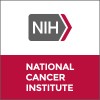
A Phase I/II Study of [124I]mIBG PET/CT in Neuroblastoma
Metastatic NeuroblastomaThis study aims to show that 3-dimensional PET/CT imaging with a new novel PET tracer (called [124I]mIBG) can detect as many or more sites of neuroblastoma (a type of childhood cancer) compared to the recommended 1-dimensional routine scans (called [123I]mIBG planar scintigraphy).

Simvastatin With Topotecan and Cyclophosphamide in Relapsed and/or Refractory Pediatric Solid and...
RetinoblastomaClear Cell Sarcoma10 moreThis is a Phase I trial with new experimental drugs such as simvastatin in combination with topotecan and cyclophosphamide in the hopes of finding a drug that may work against tumors that have come back or that have not responded to standard therapy. This study will define toxicity of high dose simvastatin in combination with topotecan and cyclophosphamide and evaluate for cholesterol levels and IL6/STAT3 pathway changes as biomarkers of patient response.

Humanized 3F8 Monoclonal Antibody (Hu3F8) When Combined With Interleukin-2 in Patients With High-Risk...
NeuroblastomaThe purpose of this study is to find out if "humanized 3F8" (Hu3F8) when combined with interleukin-2 (rIL2) is safe for treating neuroblastoma and other cancers. A phase 1 study means the investigators are trying to find out what side effects happen when higher and higher doses of a drug are used. The investigators want to find out what effects, good and/or bad, Hu3F8 combined with rIL2 has on cancer. The amount of Hu3F8 that patients gets will depend on when they start treatment on this study. The amount of rIL2 will be the same for all patients. The investigators also want to find out more about how Hu3F8 works and how effective it is in attacking the disease when combined with rIL2.

Combination Chemotherapy, Monoclonal Antibody, and Natural Killer Cells in Treating Young Patients...
NeuroblastomaThis is a safety / feasibility trial evaluating the combination of a humanized anti-GD2 antibody (HU14.18K322A) manufactured at the Children's GMP, LLC at St. Jude with allogeneic natural killer (NK) cells and standard chemotherapy in children with relapsed or refractory neuroblastoma.

Etanercept in Treating Young Patients With Idiopathic Pneumonia Syndrome After Undergoing a Donor...
Accelerated Phase Chronic Myelogenous LeukemiaBlastic Phase Chronic Myelogenous Leukemia23 moreThis phase II trial is studying how well etanercept works in treating young patients with idiopathic pneumonia syndrome after undergoing a donor stem cell transplant. Etanercept may be effective in treating patients with idiopathic pneumonia syndrome after undergoing a donor stem cell transplant.

Irinotecan and Temozolomide in Treating Young Patients With Recurrent Neuroblastoma
NeuroblastomaRATIONALE: Drugs used in chemotherapy, such as irinotecan and temozolomide, work in different ways to stop the growth of tumor cells, either by killing the cells or by stopping them from dividing. Giving more than one drug (combination chemotherapy) may kill more tumor cells. PURPOSE: This phase II trial is studying how well giving irinotecan together with temozolomide works in treating young patients with recurrent neuroblastoma.

Vorinostat With or Without Isotretinoin in Treating Young Patients With Recurrent or Refractory...
Childhood Acute Promyelocytic Leukemia (M3)Childhood Atypical Teratoid/Rhabdoid Tumor18 moreThis phase I trial is studying the side effects and best dose of vorinostat when given together with isotretinoin in treating young patients with recurrent or refractory solid tumors, lymphoma, or leukemia. Drugs used in chemotherapy, such as vorinostat, work in different ways to stop the growth of cancer cells, either by killing the cells or by stopping them from dividing. Vorinostat may also stop the growth of cancer cells by blocking some of the enzymes needed for cell growth and by blocking blood flow to the cancer. Isotretinoin may cause cancer cells to look more like normal cells, and to grow and spread more slowly. Giving vorinostat together with isotretinoin may be an effective treatment for cancer.

Intensive Chemo-Radiotherapy With Peripheral Blood Progenitor Cell Rescue for Children With Advanced...
NeuroblastomaEwings Sarcoma1 moreThe main purpose of this study is to determine the short and long term side effects of a very intensive treatment, which includes combinations of chemotherapy drugs followed by radiation therapy and two transplants supported by peripheral blood progenitor cells (stem cells), for children with advanced stage neuroblastoma and sarcomas.

Therapy for Children With Neuroblastoma
NeuroblastomaThis is a phase II window study of the combination of ZD1839 (gefitinib) and irinotecan in children with high-risk neuroblastoma followed by standard induction chemotherapy, intensification with autologous stem cell transplantation, and an oral maintenance phase with 13-cis-retinoic acid and topotecan. We hypothesize that the ZD1839 (gefitinib) and irinotecan window will be efficacious.

ZD1839 and Oral Irinotecan in Treating Young Patients With Refractory Solid Tumors
GlioblastomaRhabdomyosarcomas2 moreThe purpose of this Phase I study is to find the largest dose of the drug irinotecan, in combination with ZD1839, that can be given safely to children and to learn the good and bad effects. Studies performed in the laboratory have shown that ZD1839 helps make available the orally administered irinotecan. In this study the intravenous (given into the vein) formula of irinotecan will be given orally on days 1-5 and days 8-12. The dose of ZD1839 will be a fixed dose and will be administered orally on days 1-12. Each course of treatment will consist of 21 days. The administration of irinotecan on day 12 of course 1 and day 2 of course 2 will be an intravenous administration. All other doses and subsequent courses will consist of an orally administered dose.
